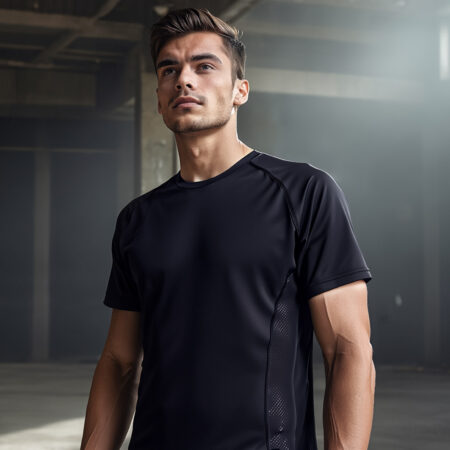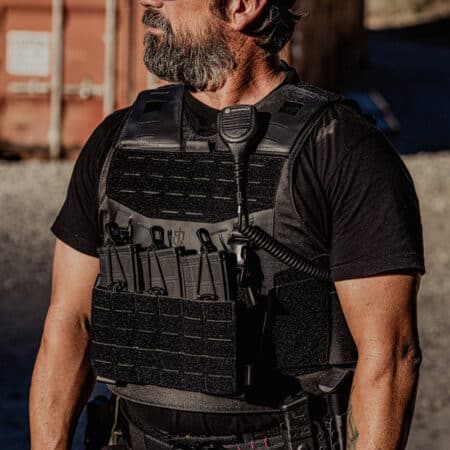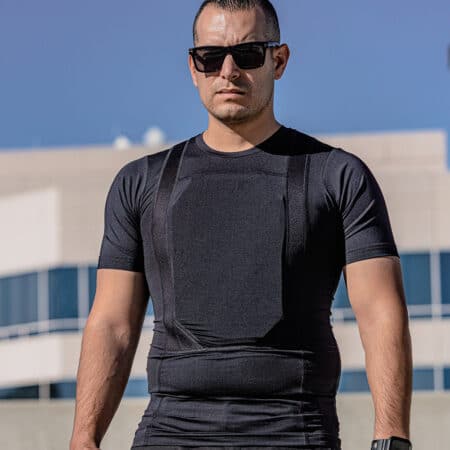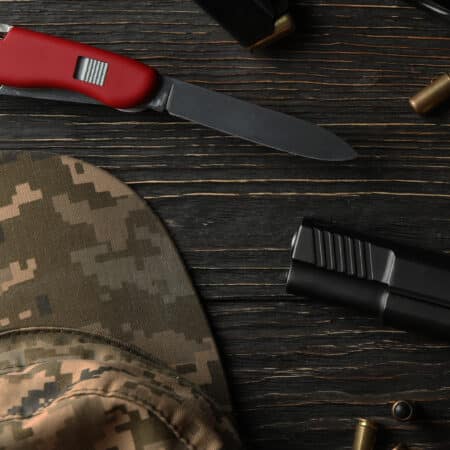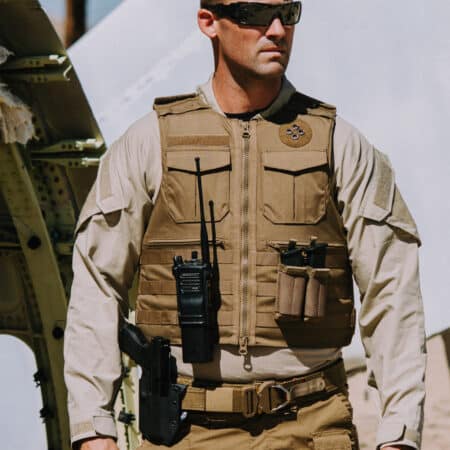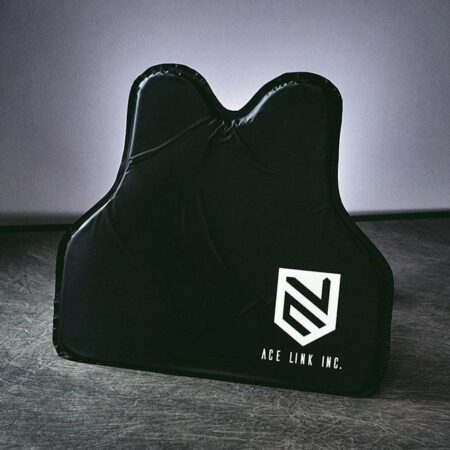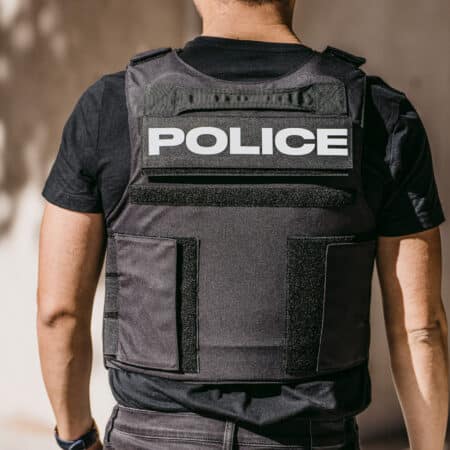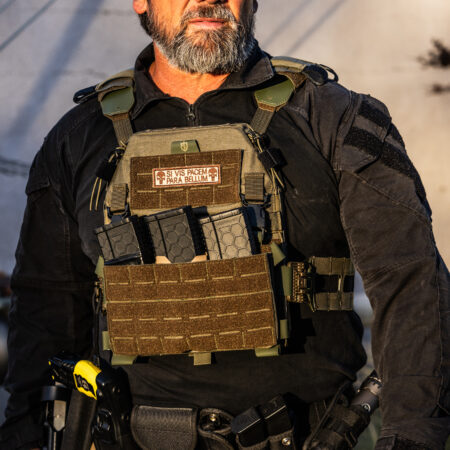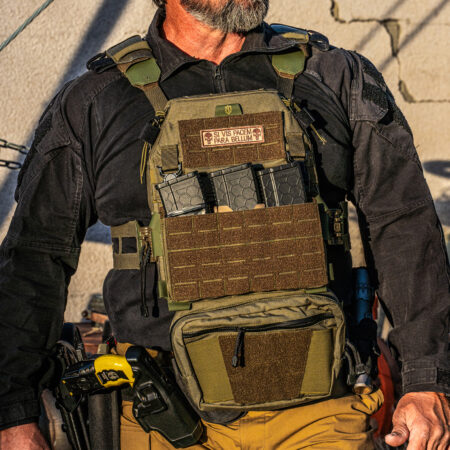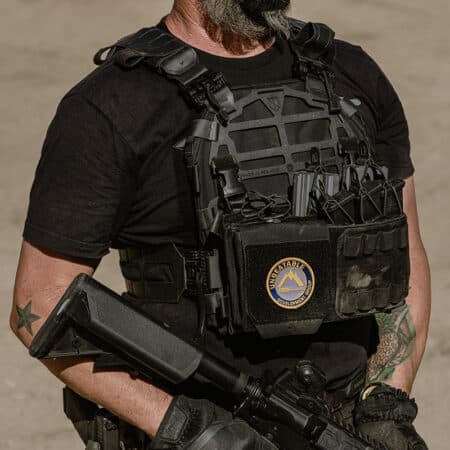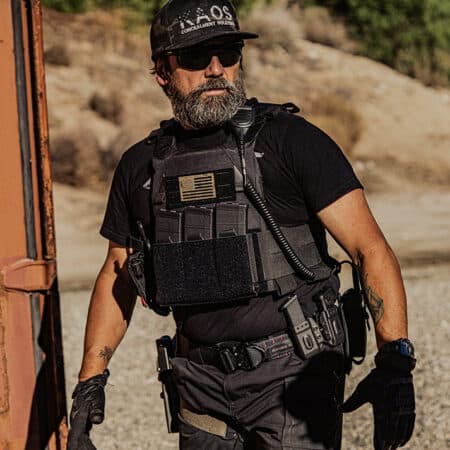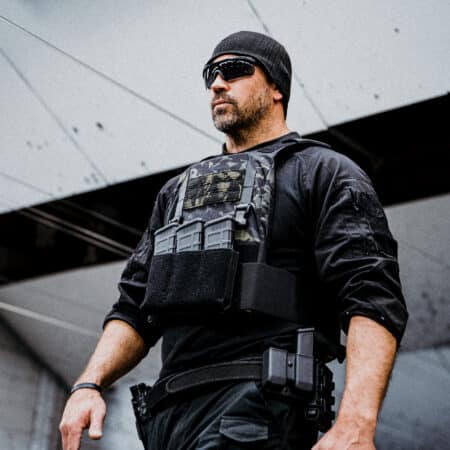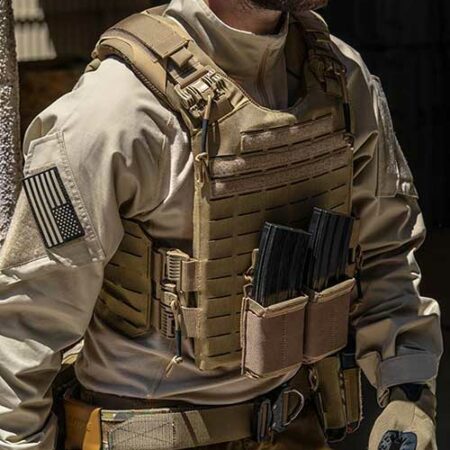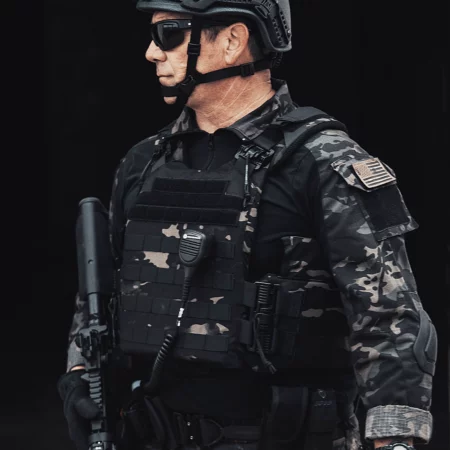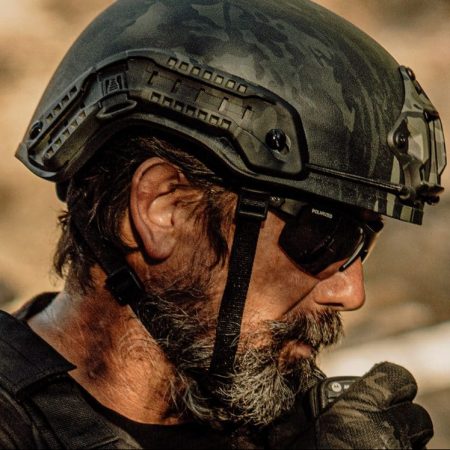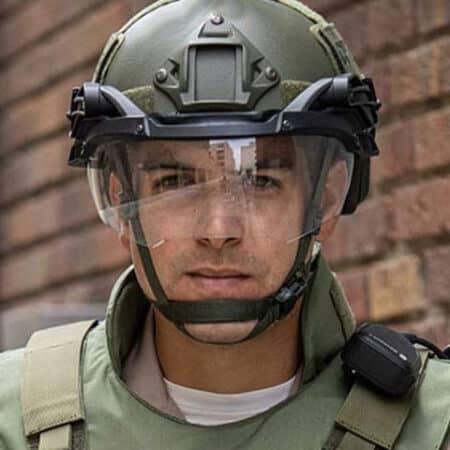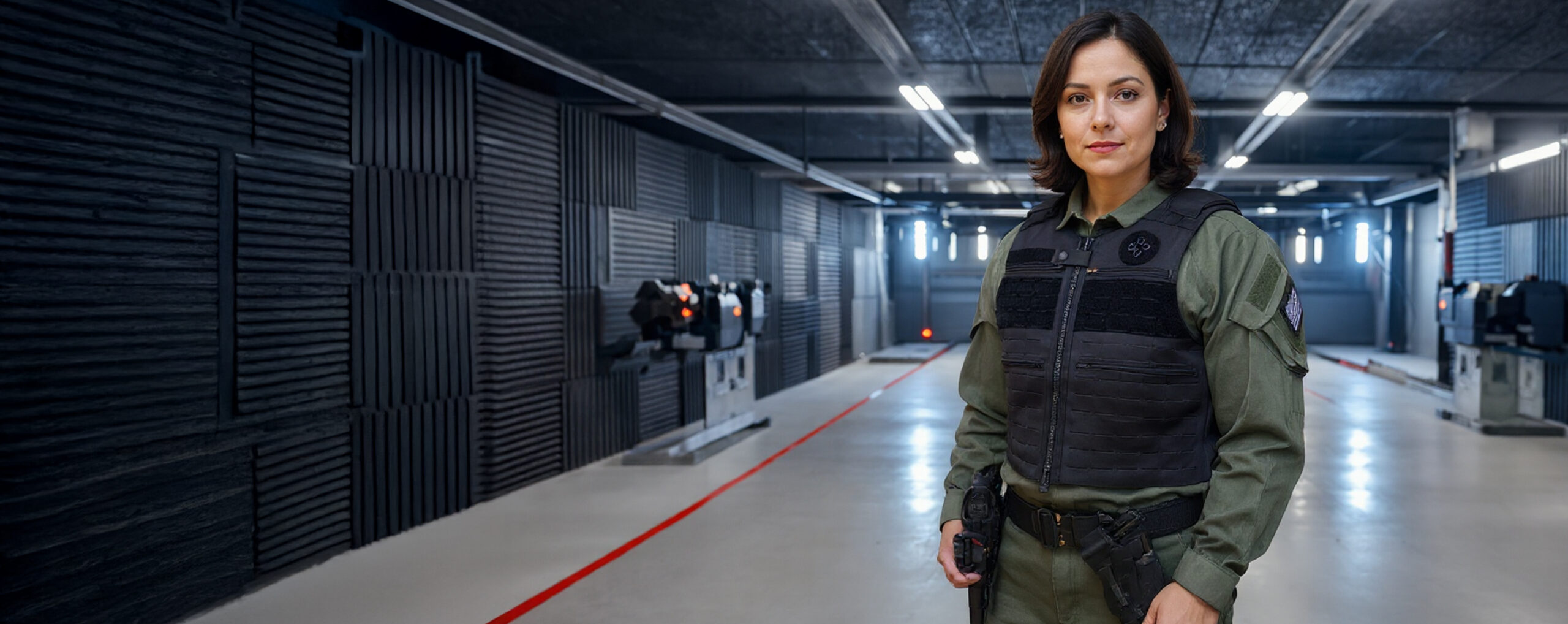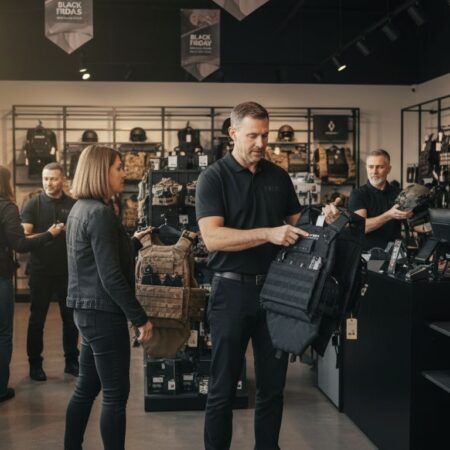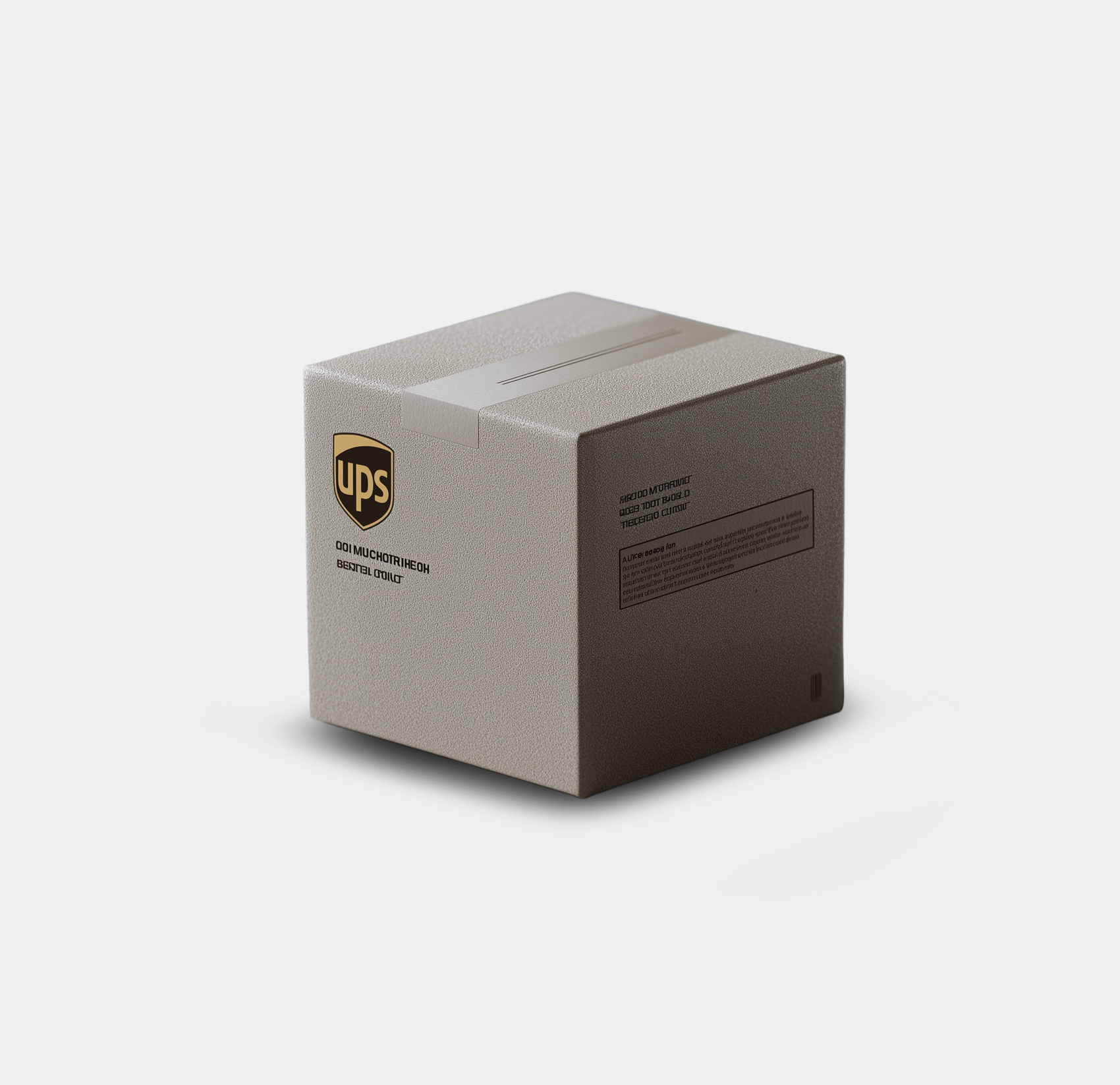- Table of Contents
- Quick Summary
- 1. Understand Body Armor and Protection Levels
- 2. Select the Right Plate Carrier for Your Mission
- 3. Choose Ballistic Helmets for Head Protection
- 4. Pick Reliable Tactical Vests and Load-Bearing Gear
- 5. Equip Tactical Belts for Essential Gear Access
- 6. Use Specialized Backpacks for Easy Load Management
- 7. Include Personal Communication and Safety Tools
- 8. Perform Regular Gear Maintenance and Inspection
- Equip Yourself Fully With Trusted Tactical Gear from AcelinkArmor
- Frequently Asked Questions
- Recommended
Every second counts when facing critical threats, and the right tactical gear can make a life-saving difference. The National Institute of Justice outlines protection levels ranging from IIA to IV, so understanding these distinctions is essential for anyone serious about personal safety. From body armor and plate carriers to helmets and tactical vests, this guide highlights key gear and the features that matter most for maximum security and readiness.
Table of Contents
- Understand Body Armor And Protection Levels
- Select The Right Plate Carrier For Your Mission
- Choose Ballistic Helmets For Head Protection
- Pick Reliable Tactical Vests And Load-Bearing Gear
- Equip Tactical Belts For Essential Gear Access
- Use Specialized Backpacks For Easy Load Management
- Include Personal Communication And Safety Tools
- Perform Regular Gear Maintenance And Inspection
Quick Summary
| Takeaway | Explanation |
|---|---|
| 1. Understand Body Armor Levels | Body armor protection levels range from IIA to IV, affecting what threats they can stop. Choose based on risk environment and threats expected. |
| 2. Select Appropriate Plate Carrier | Choose a plate carrier considering protection level, weight, comfort, and modular capabilities based on your mission requirements. |
| 3. Choose Effective Ballistic Helmets | Verify ballistic standards and select lightweight helmets that ensure comfort, durability, and compatibility with tactical communication gear. |
| 4. Prioritize Tactical Vest Features | Select tactical vests based on protection level, modular capabilities, and ergonomic design for balanced load carrying and customization options. |
| 5. Regularly Maintain Your Gear | Perform regular inspections, cleaning, and maintenance on your tactical gear to ensure optimal performance and reliability when needed. |
1. Understand Body Armor and Protection Levels
Body armor is your last line of defense in high risk situations, offering critical protection for vital organs when seconds count. The National Institute of Justice (NIJ) defines body armor as specialized protective vests designed to stop ballistic threats and minimize potential life threatening injuries.
Understanding body armor protection levels is crucial for selecting the right gear for your specific needs. The NIJ classifies body armor into different protection levels based on their ability to stop specific ammunition types and calibers. Protection levels range from Level IIA to Level IV, with each level representing increased stopping power and defensive capabilities.
The key protection levels break down as follows:
- Level IIA: Stops slower handgun rounds like 9mm and .40 caliber
- Level II: Provides protection against faster 9mm and .357 Magnum rounds
- Level IIIA: Stops most handgun ammunition including .44 Magnum rounds
- Level III: Protects against rifle rounds like 7.62x39mm
- Level IV: Highest civilian protection level stopping armor piercing rifle rounds
Understanding Advanced Body Armor: Protection Explained offers deeper insights into these critical distinctions. Choosing the right protection level depends on your specific risk environment, potential threats, and personal safety requirements. Always assess your unique situation and consult professional recommendations when selecting body armor.
2. Select the Right Plate Carrier for Your Mission
A plate carrier is more than just equipment. It is your lifeline in high stakes environments where protection and mobility can mean the difference between survival and vulnerability. Understanding how to select the right plate carrier requires careful consideration of your specific operational needs and potential threat scenarios.
Mission Requirements Drive Carrier Selection. According to research from DSM, selecting an appropriate plate carrier involves balancing protection levels with maneuverability. Your choice should reflect the specific demands of your environment whether you are a law enforcement professional, military personnel, or civilian preparing for potential high risk situations.
Key Considerations When Selecting a Plate Carrier:
- Weight and Mobility: Lightweight materials like Dyneema offer enhanced movement without compromising protection
- Protection Level: Match carrier to expected threat levels (NIJ Level III or IV for rifle round protection)
- Comfort and Adjustment: Ensure proper fit with adjustable straps and ergonomic design
- Modular Capabilities: Look for MOLLE compatibility for additional gear attachment
For more comprehensive insights into plate carrier selection, check out our 5 Features of an Ideal Plate Carrier guide. Your plate carrier is a critical piece of personal protective equipment. Take time to evaluate your specific needs, understand the protection levels, and choose a carrier that provides both security and operational flexibility.
3. Choose Ballistic Helmets for Head Protection
Head protection is not a luxury. It is a critical line of defense in high risk environments where fragmentation and ballistic threats can mean the difference between life and death. A quality ballistic helmet represents your first barrier against potentially fatal head injuries.
According to research from DSM, modern ballistic helmets utilize advanced materials like Dyneema to provide lightweight protection that enhances both safety and mobility. These innovative helmets are engineered to absorb and deflect impact while maintaining critical comfort for extended wear.
Key Considerations for Ballistic Helmet Selection:
- Protection Level: Verify NIJ ballistic protection standards
- Weight and Comfort: Choose lightweight materials that allow extended wear
- Mounting Options: Ensure compatibility with communication and night vision gear
- Material Durability: Select helmets constructed from high performance synthetic fibers
- Proper Fit: Prioritize adjustable systems that provide secure and personalized protection
For comprehensive guidance on making the right selection, explore our guide on choosing ballistic helmets. Remember that your helmet is more than equipment. It is a critical investment in your personal safety and operational effectiveness.
4. Pick Reliable Tactical Vests and Load-Bearing Gear
Tactical vests are more than just equipment storage. They are critical systems that support your operational capability, protect your body, and organize essential gear in high stress environments. Your vest is your lifeline when every second and every ounce of equipment matters.
According to research from DSM, modern tactical vests now incorporate lightweight materials like Dyneema that provide exceptional durability without compromising mobility. These advanced materials ensure you can carry critical equipment while maintaining maximum operational flexibility.
Critical Factors When Selecting Tactical Vests:
- Protection Level: Verify NIJ ballistic protection standards
- Modular Configuration: Choose MOLLE compatible systems
- Weight Distribution: Ensure ergonomic design for balanced load carrying
- Material Durability: Select high performance synthetic fiber construction
- Customization Options: Look for adjustable straps and interchangeable pouches
For professional guidance on tactical vest selection, explore our best pouches and accessories guide. Remember that your tactical vest is an investment in your safety and operational effectiveness. Choose wisely.
5. Equip Tactical Belts for Essential Gear Access
A tactical belt is not just an accessory. It is a critical system for organizing and accessing your most important equipment when every second counts. The right tactical belt transforms your operational readiness by providing strategic gear placement and rapid access.
According to research from DSM, modern tactical belts now incorporate lightweight materials like Dyneema that offer exceptional durability without compromising mobility. These advanced belts ensure you can carry critical equipment while maintaining maximum operational flexibility.
Essential Considerations for Tactical Belt Selection:
- Weight Distribution: Ensure ergonomic design for balanced load carrying
- Modular Compatibility: Choose MOLLE or similar attachment systems
- Material Strength: Select high performance synthetic fiber construction
- Quick Release Mechanisms: Prioritize belts with rapid attachment capabilities
- Adjustability: Look for multiple sizing options for precise fit
For professional insights into tactical belt selection, explore our Durable Tactical Belt guide. Your tactical belt is more than equipment. It is a critical component of your operational preparedness.
6. Use Specialized Backpacks for Easy Load Management
A tactical backpack is more than just storage. It is a critical system for organizing and transporting essential equipment while maintaining mobility and operational readiness. The right backpack can mean the difference between efficient movement and cumbersome load management.
According to research from DSM, modern specialized backpacks now incorporate lightweight materials like Dyneema that offer exceptional durability without adding unnecessary weight. These advanced backpacks ensure you can carry critical gear while maintaining maximum operational flexibility.
Key Considerations for Tactical Backpack Selection:
- Weight Distribution: Prioritize ergonomic design with padded shoulder straps
- Modular Compatibility: Choose MOLLE or similar attachment systems
- Material Durability: Select high performance synthetic fiber construction
- Compartment Organization: Look for multiple specialized storage zones
- Water Resistance: Ensure protection against environmental conditions
Professional tactical operations demand precision in every aspect of gear selection. Your backpack is no exception. Choose wisely and prioritize functionality over aesthetic appeal.
7. Include Personal Communication and Safety Tools
In high stakes environments, effective communication and personal safety tools are not optional. They are lifelines that can mean the difference between mission success and potential catastrophic failure. Your tactical gear setup must integrate communication and safety technologies seamlessly.
According to research from DSM, modern tactical gear now incorporates lightweight communication systems that maintain operational mobility. These advanced tools ensure you can stay connected and protected without unnecessary encumbrance.
Essential Communication and Safety Tools:
- Radio Communication Systems: Compact and lightweight units with encrypted channels
- Emergency Locator Beacon: GPS enabled personal tracking device
- Tactical Flashlight: High lumen output with strobe capabilities
- Multitool: Compact survival tool with multiple functional attachments
- First Aid Compact Kit: Trauma supplies for immediate medical response
Operational readiness demands more than just protective gear. It requires a comprehensive approach to personal safety that integrates communication, emergency response, and situational awareness tools. Strategic tool selection can significantly enhance your operational effectiveness.
8. Perform Regular Gear Maintenance and Inspection
Tactical gear is an investment in your personal safety and operational effectiveness. Like any critical equipment, it requires consistent maintenance to ensure peak performance and reliability when you need it most. Neglecting proper care can compromise your protection and potentially put you at risk.
According to research from DSM, regular maintenance of tactical gear especially body armor constructed with advanced materials like Dyneema is crucial for maintaining its protective capabilities and extending its operational lifespan.
Essential Maintenance and Inspection Practices:
- Visual Inspection: Check for tears, punctures, or material degradation
- Cleaning Protocol: Use manufacturer recommended cleaning methods
- Storage Conditions: Store in cool dry environments away from direct sunlight
- Functional Testing: Verify attachment mechanisms and structural integrity
- Documentation: Maintain a maintenance log tracking inspection dates
Your tactical gear is only as reliable as its weakest component. Treat maintenance as a critical mission objective. Regular inspections and proper care are not optional. They are fundamental to ensuring your equipment performs when your life depends on it.
Below is a comprehensive table summarizing the key points and considerations for choosing tactical gear as discussed throughout the article.
| Item | Description | Key Considerations |
|---|---|---|
| Body Armor | Protective vests categorized by NIJ levels IIA to IV. | Match armor level to threats; Level IV stops armor-piercing rounds. |
| Plate Carrier | Critical for balancing protection and mobility. | Weight, mobility, and modularity are important; select based on mission needs. |
| Ballistic Helmets | Essential head protection using lightweight materials like Dyneema. | NIJ protection standards, comfort, and mounting options. |
| Tactical Vests | Systems for protection and gear organization. | Ensure ergonomic design and MOLLE compatibility. |
| Tactical Belts | Systems for strategic equipment placement. | Focus on balanced load and quick release mechanisms. |
| Tactical Backpacks | For equipment organization and mobility. | Prioritize ergonomic design and water resistance. |
| Communication & Safety Tools | Essential for maintaining operational readiness. | Include radios, locator beacons, and multitools. |
| Gear Maintenance | Regular upkeep is crucial for performance and safety. | Conduct visual inspections and follow proper cleaning protocols. |
Equip Yourself Fully With Trusted Tactical Gear from AcelinkArmor
The article highlights the challenge of assembling a complete tactical gear checklist that balances protection, mobility, and operational readiness. You need gear that withstands extreme threats like rifle rounds while being comfortable and modular enough for your mission. The pain points include selecting the right body armor protection level, plate carriers, ballistic helmets, and reliable load-bearing equipment that stay durable and effective under pressure.
At AcelinkArmor.com, we understand the urgency of having gear that protects your life in critical moments. Our extensive catalog features NIJ certified Level III and Level IV body armor, ergonomic plate carriers, resilient ballistic helmets, and versatile tactical vests designed to keep you safe and mission-ready. If you want to learn more about the features that make the best plate carrier, check out our detailed guide on 5 Features of an Ideal Plate Carrier. For head protection essentials, explore our comprehensive guide on choosing ballistic helmets.
Don’t leave your safety to chance. Start building your complete tactical gear setup now with trusted solutions from AcelinkArmor.com. Your life and mission depend on gear you can trust every second.
Frequently Asked Questions
What is included in a complete tactical gear checklist?
A complete tactical gear checklist includes essential items such as body armor, plate carriers, ballistic helmets, tactical vests, tactical belts, and specialized backpacks. Assess your operational needs to ensure all essentials are covered, focusing on both protection and mobility.
How do I choose the right level of protection for body armor?
To choose the right protection level for body armor, evaluate the types of threats you may face. Match the armor protection level (from Level IIA to IV) to your specific risk environment, ensuring that it can stop the required ammunition types.
What features should I look for in a tactical vest?
When selecting a tactical vest, prioritize features like protection level, modular configuration (MOLLE compatibility), weight distribution, and material durability. Ensure that the vest is adjustable to provide a proper fit for optimal comfort and functionality.
How can I maintain and inspect my tactical gear?
To maintain and inspect your tactical gear, regularly conduct visual inspections for any damage, clean it according to recommended methods, and store it properly in a cool, dry place. Perform these maintenance tasks at least quarterly to extend the lifespan and reliability of your equipment.
What types of communication tools are essential for tactical operations?
Essential communication tools for tactical operations include radio communication systems, emergency locator beacons, and tactical flashlights. Ensure these tools are lightweight and compatible with your gear for efficient use during high-stakes situations.
Why is it important to have a modular tactical backpack?
A modular tactical backpack is important because it allows for customized storage and easy access to essential equipment. Choose a backpack with MOLLE compatibility so you can adapt it to your specific operational needs, improving efficiency.
Recommended
- Durable Tactical Belt Tan – Ace Link Armor
- Durable Tactical Belt Multicam – Ace Link Armor
- 7 Essential Tactical Gear For Work Out Boosts – Ace Link Armor
- Durable Tactical Belt Ranger Green – Ace Link Armor



